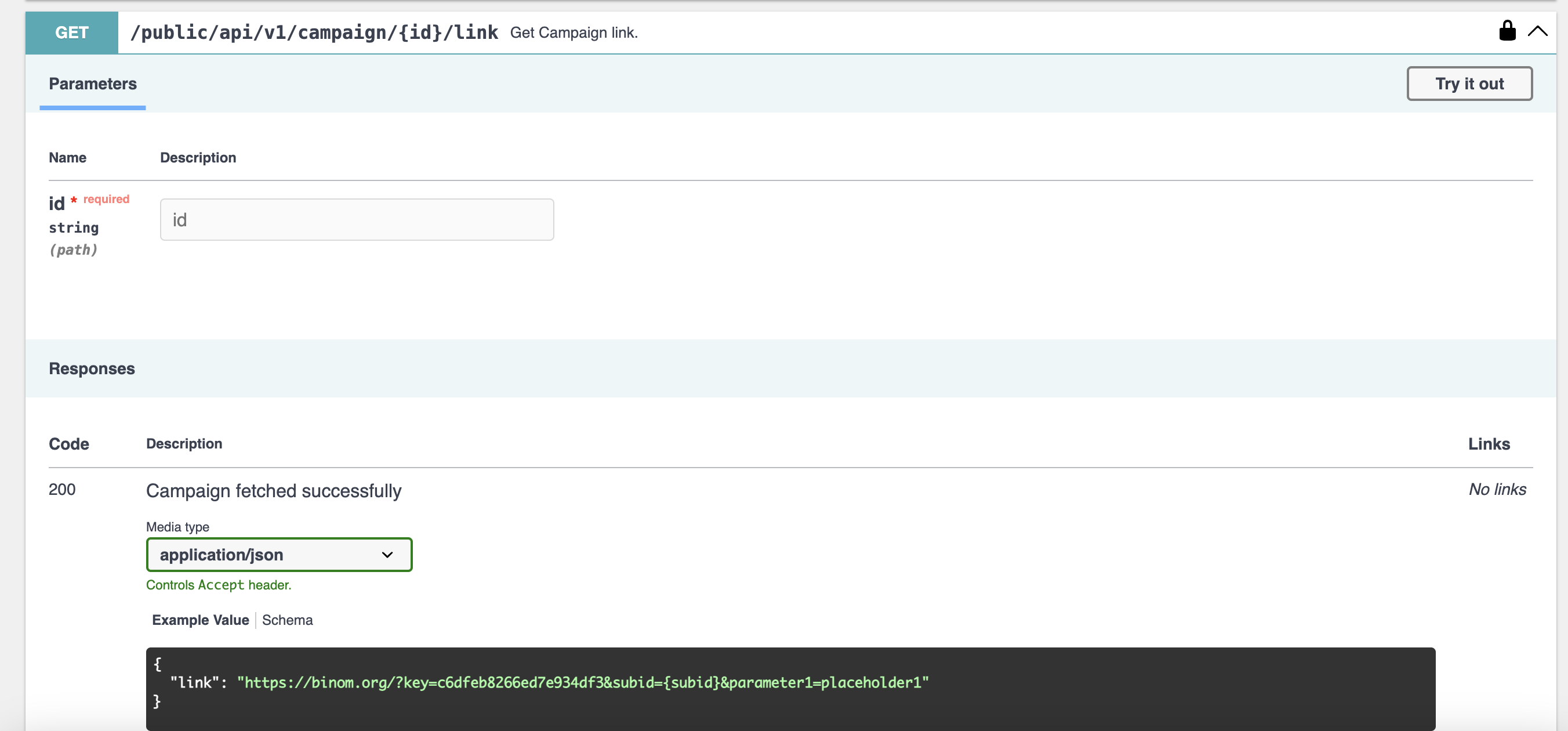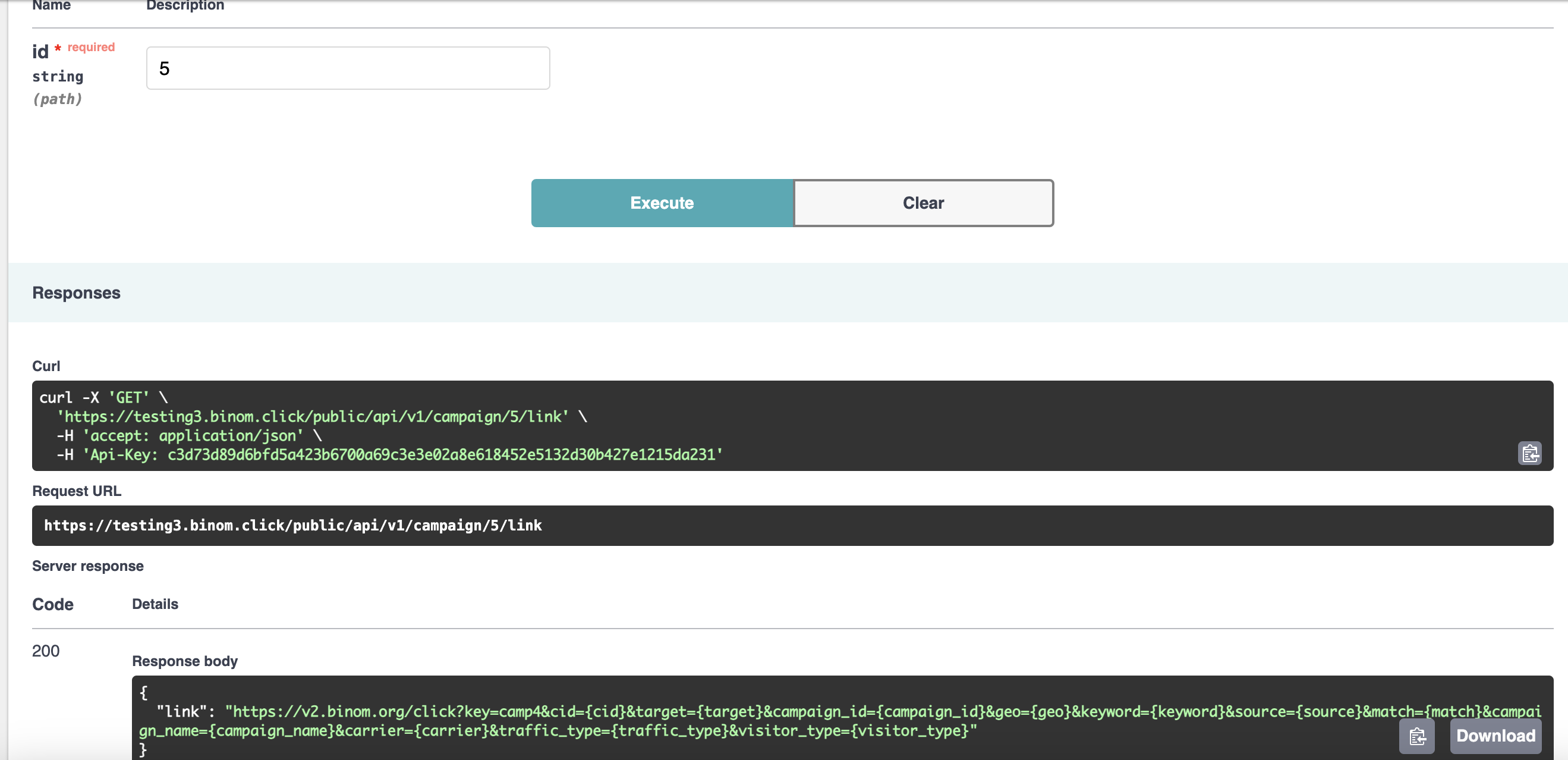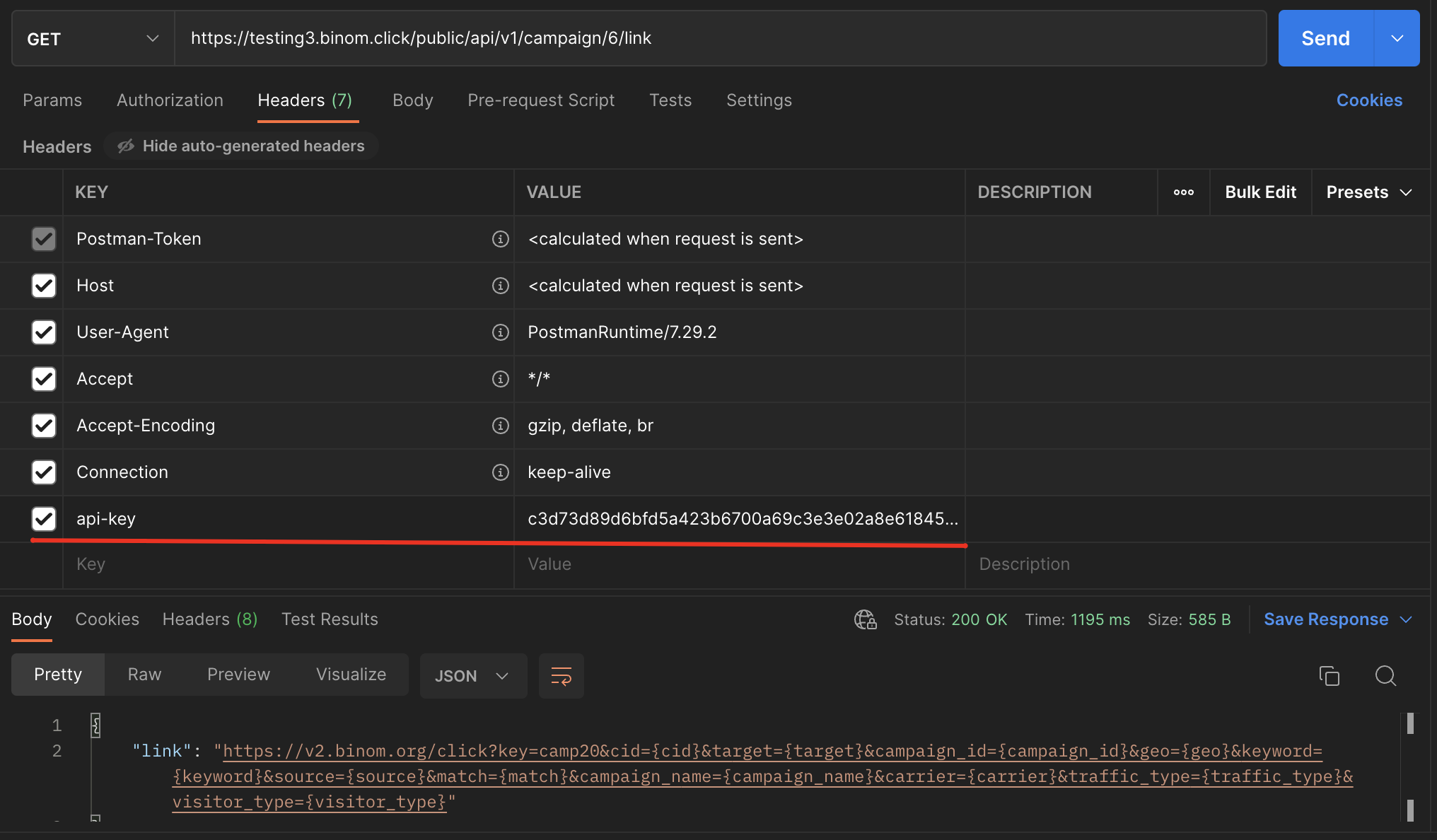API
API is a simple way to create, modify, or delete elements in the tracker or get data from the tracker in JSON format using HTTP requests.
You can find the documentation at the api/doc page of your tracker's domain: https://your-tracker.com/api/doc
Note: There is a separate Click API for working with clicks.
Getting an API Key
The first step is to obtain an API key. You can find the current user's API key on the Settings >> User page:

Important: The tracker super administrator's API key can be used to access all tracker data. Therefore, if you plan to grant API access to the tracker to a third party or a third-party application, we recommend creating a separate user on the Users page who will only have access to certain elements and using their API key for work.
An example of such a user with limited access:

In this case, the user will only have access to three selected campaigns via the API.
Sending a test request
To test the API's functionality, it is convenient to use the documentation, which contains a list of all available requests and examples for each of them.

Click the Authorize button to add your key, then find the request you are interested in, for example, getting a campaign link:

Next, click the Try it out button to go to the test request, then enter the required parameters (in this case, the only parameter is the campaign ID) and click the Execute button.
You will then receive the request response:

The Request URL field shows the final request endpoint and the Server response field displays the server's response to the request. In this case, the request was successful and the tracker sent a JSON response containing the link to the campaign with ID 5 that was requested.
Once you have used the documentation to get an idea of what kind of request is needed to get or send the necessary tracker data, you can then use it in your scripts or when sending requests using Curl or specialized API tools, such as Postman:

Note: In tracker version v2, the API key is now passed in the api-key header, not in the GET request parameters, as it was in previous versions.
